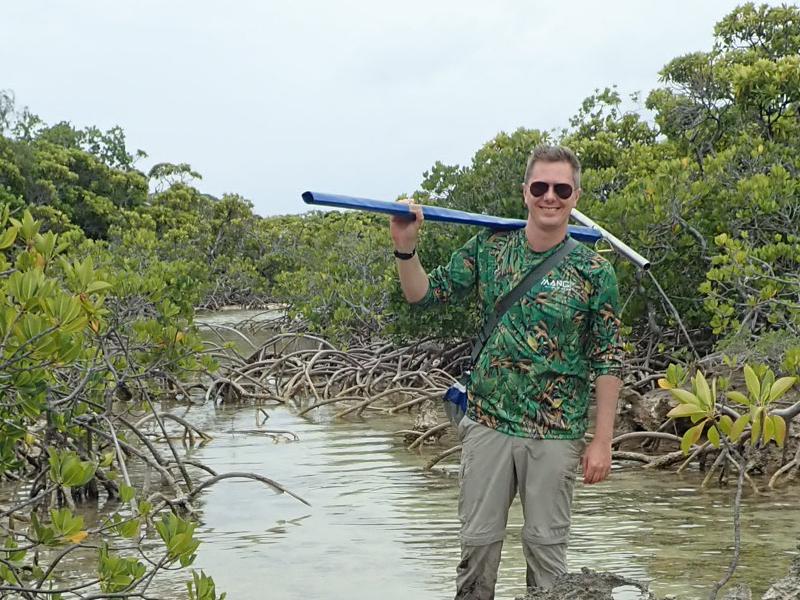Mangroves are ‘just awesome,’ says Tulane researcher
Daniel Friess, the Cochran Family Professor of Earth and Environmental Sciences at Tulane University, keeps it simple when explaining why mangroves, his area of study, are so special. “They’re just awesome.”
Mangroves, which are plants known for their large, exposed roots and which typically grow in salt water, are found along coastlines in tropical and subtropical environments around the world, from Southeast Asia to Madagascar to right here in Louisiana, but they’re expanding north as temperatures increase.
“There’s kind of a common misconception that mangroves love to be flooded because they’re by the sea,” said Friess, “but no, they hate it!” Mangroves have been able to adapt to surviving in saltwater environments, but they can only take so much before they begin to die. As sea levels rise, mangroves can be pushed to their limits quicker than they can adapt, which Friess says is the biggest threat to mangroves right now.
Friess joined Tulane’s faculty in 2022. He received his PhD from the University of Cambridge in 2009 studying English salt marshes, before moving to Singapore to work as a researcher for two years and a faculty member for 11 years, where he fell in love with mangroves. “Working in Southeast Asia, you just saw how important this ecosystem was for people,” he said. “It wasn’t just an area of research. It wasn’t just an academic topic.”
His work conserving and restoring mangroves had a tangible impact on communities. Friess considers his time working with NGOs, corporations and communities as something that has massively benefitted his work, changing how he approaches and communicates his research.
One of the central aspects of Friess’ research is blue carbon, organic carbon that is stored in coastal wetlands. In a terrestrial forest, for example, branches and leaves fall to the ground and, over time, get broken down by bacteria. The carbon in those branches and leaves then gets released back into the atmosphere.
“But with coastal wetlands such as mangroves, the soil is waterlogged because the tide is coming in a couple of times a day, so you don’t have the same microbes and stuff, so you don’t get the same kind of breakdown,” said Friess, “so more carbon that comes from the tree just gets stored in the soil over thousands of years.”
As mangrove forests are lost, this carbon storage is not as effective or can be lost entirely when the new uses for the land disturbs the carbon that is stored. Coastal areas are also more vulnerable to erosion from storms, and many fish, who use mangroves as nurseries, lose their habitats. This is why another large part of Friess’ work has to do with mangrove restoration. Restoration is more than just planting mangroves in tidal zones, however.
“If you plant it but the environment has been modified, they’re all going to die,” Friess said, “and that’s what has happened in many projects in Southeast Asia, for example,” where mangrove forests have been converted into shrimp ponds and plantations.
“It’s harder and slower to fix the environment, but once you do that, you might not even need to plant because there will just be a lot of natural regeneration as soon as the conditions are right,” he added.
This restoration work is important not only for research, it is also essential for local communities and organizations interested in using the carbon capture abilities of mangrove forests for mitigating climate change.
“Mangrove forests are one of many potential solutions to help contribute to mitigating climate change,” said Friess, “and nowhere are the benefits of wetlands more important than in Louisiana. Louisiana is the home of wetland science, and it has been for decades, so where better to be?”

